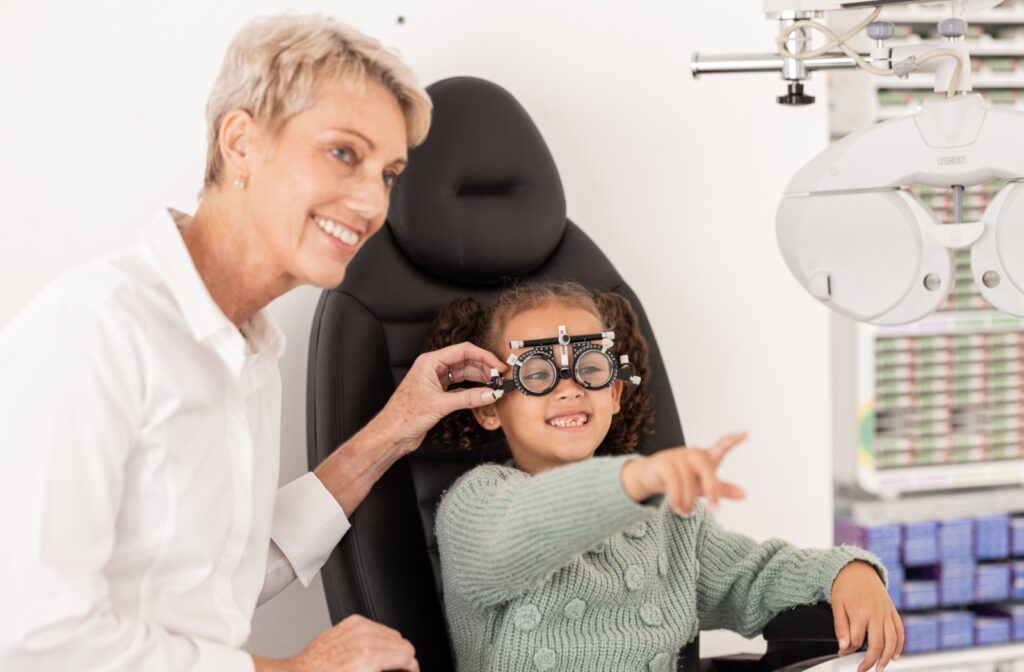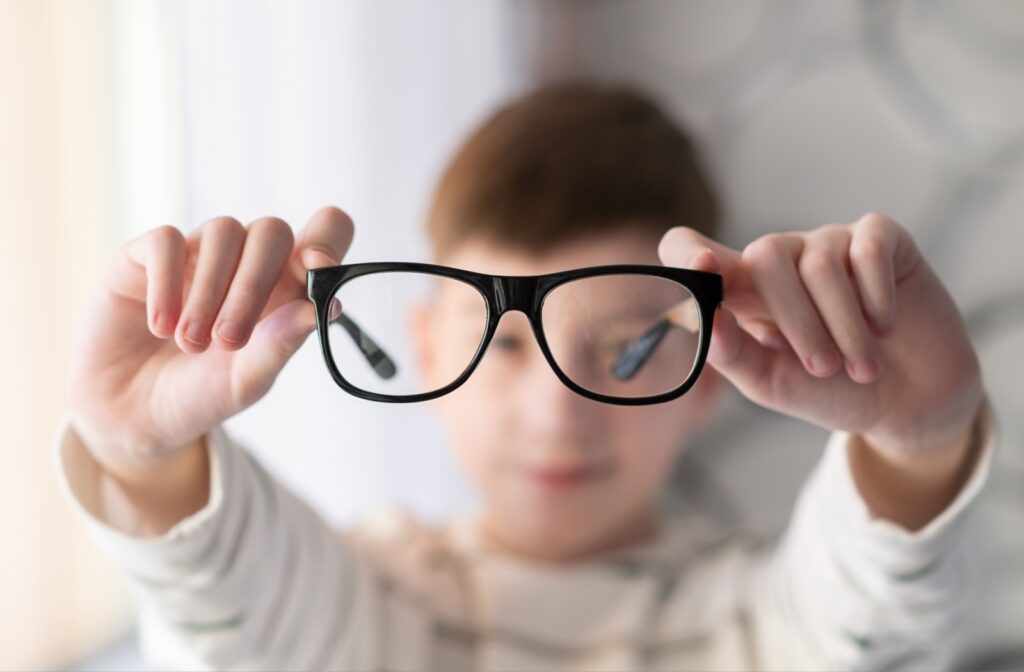With digital screens now part of everyday life, nearsightedness—also known as myopia—is more common than ever, especially among children and teens. If you’ve noticed your child squinting to see the board at school or struggling with blurry distance vision yourself, you’re not alone. Understanding how to manage myopia and slow its progression is key to protecting long-term vision and reducing the risk of future eye health complications.
Myopia can be managed through a combination of regular eye exams, specialty lenses or contact lenses, medicated eye drops, and healthy lifestyle habits designed to support proper eye development.
What Is Myopia?
Myopia is a refractive error where distant objects appear blurry, while close-up vision remains clear. It happens when the eye grows too long or the cornea is too curved, causing light to focus in front of the retina rather than directly on it.
Myopia typically begins in childhood and can progress rapidly without proper management. Studies suggest that nearly 50% of the global population could be affected by myopia by 2050, largely due to increased screen time and reduced outdoor activity.
Common Symptoms of Myopia
- Blurred distance vision
- Headaches after visual tasks
- Eye strain or fatigue
- Frequent squinting
- Holding screens or books very close
Undiagnosed myopia can impact a child’s ability to learn and concentrate in school. For adults, it may interfere with driving, outdoor activities, or even job performance.
When Does Myopia Progress the Most?
The most rapid progression typically occurs between the ages of 6 and 12. During these developmental years, children’s eyes are still growing, making early detection and intervention essential. While progression often slows in the late teens, regular monitoring is still important to ensure stability.
Can Myopia Be Cured?
There’s currently no cure for myopia, but it can be managed and slowed effectively. The goal of myopia control is to prevent myopia from worsening quickly and to reduce the long-term risk of complications like retinal detachment, glaucoma, or macular degeneration.
Myopia Management Options
Myopia control is targeted at children and focuses on slowing the progression of myopia in order to protect a child’s future vision. Here are the most common approaches:
1. Routine Eye Exams
Annual or biannual eye exams help track vision changes, monitor eye growth, and adjust treatments as needed. They’re crucial in catching early signs of myopia.
2. Specialty Eyeglass Lenses
New lens technologies are designed not only to correct blurry distance vision but also to slow the progression of myopia by altering how light enters the eye.
MiYOSMART lenses are clinically proven to slow myopia in children. These lenses use a special defocus design that provides clear central vision while creating a ring of peripheral defocus to signal the eye to slow its growth.
3. Contact Lens Options
For kids who are comfortable with contacts, several soft myopia control lenses are available to help manage myopia.
MiSight contact lenses are daily disposable lenses that correct vision while using a dual-focus design to reduce eye elongation, which is a key factor in myopia progression.
Abiliti™ 1-Day contact lenses are soft, daily disposable lenses specially designed to correct vision and slow the progression of myopia in children. They use advanced myopic defocus technology to reduce the stimulus for eye elongation.
4. Orthokeratology (Ortho-K)
These gas-permeable lenses are worn overnight to gently reshape the cornea. The result is clear daytime vision without glasses or contacts. Studies show ortho-k can significantly reduce myopia progression in children.
5. Low-Dose Atropine Eye Drops
Low-concentration atropine drops (typically 0.01%) are used at bedtime and have been shown to slow eye growth with minimal side effects. They’re ideal for younger children who may not yet be ready for contact lenses.

Lifestyle Tips to Support Myopia Management
Daily habits can make a big difference in eye health and may slow the rate of myopia progression:
- Increase outdoor time: Aim for 2+ hours per day in natural light. Outdoor activity has been linked to slower eye growth in children.
- Take screen breaks: Use the 20-20-20 rule—every 20 minutes, look at something 20 feet away for at least 20 seconds.
- Encourage good posture: Keep screens at arm’s length and avoid lying down while using devices.
- Fuel with nutrition: Foods rich in omega-3s (like salmon and flaxseeds), lutein (like spinach), and antioxidants (like berries and carrots) support long-term eye health.
Why Early Management Matters
Early detection and intervention are key to successful myopia management. When myopia begins in early childhood and is left unchecked, this can lead to high myopia—a more severe form of nearsightedness that significantly increases the risk of sight-threatening conditions later in life, including:
- Retinal detachment – The stretching of the retina in high myopia makes it more fragile and prone to tearing or detaching.
- Glaucoma – High myopia is linked to an increased risk of glaucoma, a group of eye diseases that can damage the optic nerve and cause permanent vision loss.
- Cataracts – Individuals with high myopia tend to develop cataracts earlier in life.
- Myopic macular degeneration – A serious complication where the central part of the retina deteriorates, leading to irreversible vision loss.
Children who receive timely treatment often experience slower progression and may end up with a lower final prescription in adulthood. This can reduce their dependence on thick corrective lenses, improve their quality of life, and lower the likelihood of complications in later years.
Start Your Myopia Management Journey Today
Protecting your child’s vision starts with early intervention and expert guidance. A personalized myopia management plan can help slow progression, improve quality of life, and safeguard long-term eye health. At Queensway Optometric Centre in Mississauga, ON, we offer evidence-based myopia management solutions tailored to your child’s needs. Request an appointment today to get started on the path to clearer, healthier vision.


